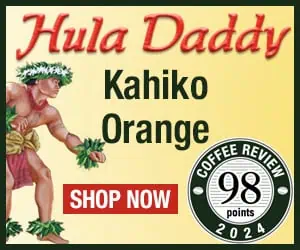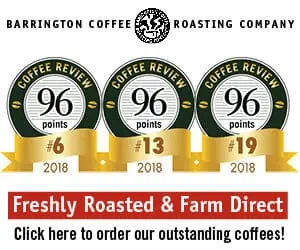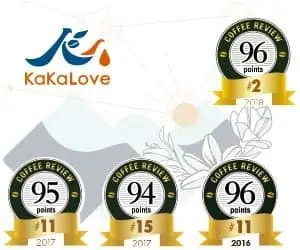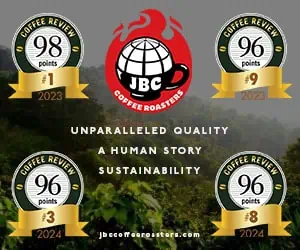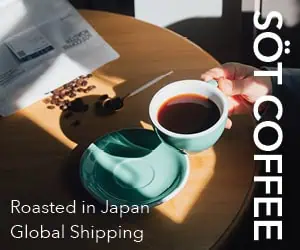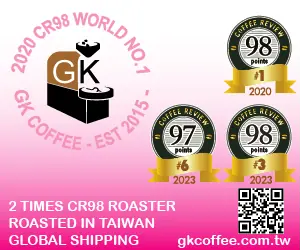Most Panama specialty coffees are grown on medium-sized farms on the Pacific-facing slopes of 11,450-foot Volcan Baru, Panama’s highest point. Wrinkled by coffee-friendly valleys, Baru rises gently but massively at Panama’s western border with Costa Rica. Most of these farms are concentrated in the Boquete Valley on the southeastern side of the volcano. A few are scattered to the west, toward the Costa Rica border, in the growing regions called Volcan and Renacimiento.
In some respects, the Boquete Valley resembles California’s wine-growing Napa Valley. The Boquete terrain is more precipitous than Napa’s, its river more sparkling, its farms less pretentious, but the feel of an entire community focused with passion and sophistication on a single specialty crop is familiar. The Panama farmers also appear unusually aware of the subtleties of their terroirs to use the wine term, the unique combination of microclimate and soil that influences cup characteristics. Perhaps because of its complexity of terrain and weather, the Boquete Valley produces an impressive variety of coffee profiles, from the ringing and intensely acidy to delicately and brightly floral.
A Tribute to Solidarity
The compact nature of the Panama growing region encourages farmers to work closely together in the promotion of their coffees through membership in the Specialty Coffee Association of Panama. The centerpiece of this cooperation is the Panama Cupping Event, a competition in which coffees from member farms are submitted to a jury of North and Central American coffee professionals. Panama was one of the first growing countries to mount such a competition. Similar events are now conducted by specialty coffee associations in Brazil, Costa Rica, and Guatemala. This year’s competition included two categories of entries: Special Reserve coffees, small lots of 25 bags each, and Specialty Grade coffees. The winning lots of Special Reserve coffee from this year’s competition will be offered at auction to dealers and roaster on the Specialty Coffee Association of America’s Internet site on May 22.
My Scores and the Jury’s Scores
I was invited to participate in the judging this year, along with nine others jurors, including green coffee buyers for large roasting companies, green coffee dealers, a Panama cupper, and an assortment of consultants and industry representatives.
This year the jury included Doug Welsh (buyer Peet’s Coffee), Marc Schonland (buyer Starbucks), Steve Leach (buyer Diedrich Coffee), Chad Trewick (buyer Caribou Coffee), Bob Fulmer (green dealer Royal Coffee), Grace Mena (exporter Deli Café, Costa Rica), Josue Ruiz (Ruiz Café, Panama), Don Holly (Specialty Coffee Association of America), and head judge Willem Boot (consultant). Coffees were cupped blind, meaning they were identified only by number.
Since I was one of the jurors for this year’s competition, I thought it might be interesting to report on my assessment of the winning coffees in the context of the jury’s general assessment. I have indicated my personal score next to the jury’s score. The numerical ratings for acidity, body, and other categories are entirely mine, and the narrative assessment generally is based on my notes, not the jury’s.
One Profile or Many?
One of the fundamental questions that threaded its way through the competition, from confidential jury deliberations to a public forum held at the end of the competition, was how best to define Panama coffee.
Most of the world’s specialty coffees are associated with certain descriptive catch-phrases. In some cases, like the extravagant floral and citrus notes associated with Ethiopia Yirgacheffe, or the sweet, round fullness of the best natural Brazils, these catch-phrases are accurate and justified by the coffees themselves. In other cases, they may be overgeneralizations or clichés.
To the degree that Panama has established a catch-phrase identity at all, people describe it as smooth and gentle, with a bright, sweet, rather delicate acidity. It is this profile that, according to common coffee wisdom, made it such an effective substitute for Kona coffee in the recent scandal that saw a Hawaiian dealer sell Panama coffees in Kona bags.
However, another school of thinking on the matter argues that the main quality Panama coffees have in common is their diversity. This unity-in-diversity approach celebrates the variety of microclimate and soil in the Volcan Baru region, and honors the sophistication of the farmers in understanding the potential of their own particular settings. It is somewhat analogous to the “Many Regions, Many Coffees” approach taken by ANACAFÉ, the Guatemalan Coffee Association, in representing Guatemala coffees to the world.
A Lean Toward Diversity
The jury’s decision to award the Lerida Estate Special Reserve the highest rating in the competition confirmed a tendency to lean toward celebrating the diversity of Panama’s coffees rather than attempting to define a characteristic regional cup. Although sweet, the Lerida Estate was hardly delicate. It was big, bold coffee, intensely and complexly acidy.
Some jurors abandoned all restraint in their admiration of the Lerida Estate, whereas others, of which I was one, admired it, but felt it was a bit bullying in its rather overpowering acidity. Some of us preferred other, more nuanced and less assertive entries, including what I regarded as the best coffee in the cupping, the Mama Cata Estate Specialty Grade.
In the Context of Crisis
Unfortunately, another undercurrent ran through the three days of cupping. This was an awareness of the crisis facing all specialty coffee owing to unprecedentedly low global coffee prices. Farmers participating in the competition met the jury and the world with admirable stoicism and good will in the face of coffee prices that, if sustained for another year or two, may doom many of their farms.
Environmentalists may carry on about their coffee-related issues, and juries may split hairs about which lot of 25 bags is more acidy or more nuanced than other lots, but unless we find a way to boost prices for all fine coffees, we may not have much to split hairs about in future cuppings.


